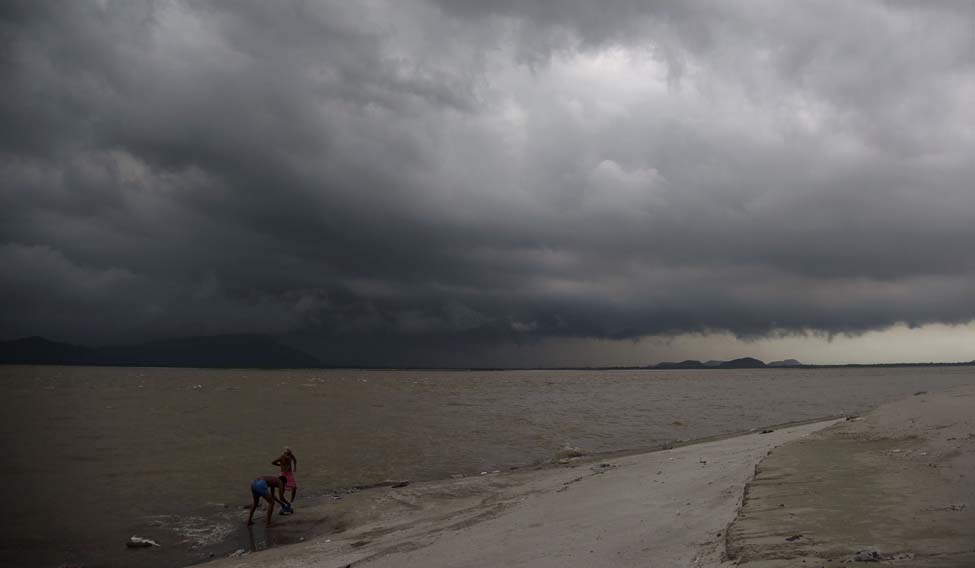For the first time, the Indian Metereological Department (IMD) used the dynamic model to forecast the 2017 monsoon. The model was used on an experimental basis for the last two years. But this time, it was used in entirety for the forecast. Called the Monsoon Mission Coupled Forecasting System (MMFCS), the dynamic model uses a supercomputer to simulate the numerous weather conditions across the globe, which have a bearing on the seasonal rains over the subcontinent.
In 2012, the government began the National Monsoon Mission (NMM), when it became obvious that a country like India, which considered the monsoon as a lifeline, needed the latest technology to be able to forecast the onset, distribution as well as pattern of the seasonal rainfall. The project commenced with a budget of Rs 400 crore.
Before this, the IMD used the statistical or empirical model, which though fine-tuned with new technology, continued to give forecasts that diverged from the ground realities.
The statistical model failed to predict the drought of 2009. K.J.Ramesh, head of IMD, said that before 2007 the absolute error in forecast was 6.24 per cent; between 1997 and 2006, the error was over 8 per cent.
The Statistical Ensemble Forecasting System, as the statistical model was called, used five key parameters to forecast the monsoon. They were :
Sea surface temperature (SS) gradient between North Altantic and North Pacific (between December and January)
Equitorial south Indian Ocean SST (in February)
East Asia mean sea level pressure (in February and March)
Northwest Europe land surface air temperature (in January)
Equatorial Pacific warm water volume (in February and March)
The dynamic model, on the other hand, uses 44 'ensemble members', or criteria, which are superimposed on the initial atmospheric and oceanic conditions prevailing in March. "We used both models this year, and our forecast based on both are similar,'' said Ramesh. Both models predict this year's seasonal rains to be at 96 per cent of the long-period average (LPA). Both models have an error margin of five percent. While the statistical model could be phased out in some years, for the time being, the IMD is keeping both systems intact.
The job of forecasting the monsoon is indeed a challenging one, with two-thirds of the economy still based on agriculture and upto 60 per cent of the farmers not in possession of assured irrigation. The summer harvest, or the kharif crop, is India's main harvest.
Monsoon forecast has become a complex process, since emerging research shows some new elements in a global weather event to have an impact on the monsoon. For instance, even the depth of snowfall over Eurasia during winter and spring impacts precipitation over the subcontinent in the summer months.
The El Nino (an anomalous band of warm water which develops every few years in December in the equatorial Pacific) and its atmospheric component, the southern oscillation, have been associated with the monsoon. While the IMD has not yet found a direct link connecting the two, the general trend is that El Nino brings bad monsoon.
The dynamic model studies all these algorithms, and is able to factor in continuous changes in the weather, while forecasting. The IMD has at its disposal some of the best data-generating devices. Two main satellites, Kalpana-1 and INSAT, monitor weather over the country, and are able to send images through the charge-coupled device camera. Buoys in the Arabian Sea, Bay of Bengal and Indian Ocean constanty pick up changes within these waters and record sea surface temperatures. This is required to observe the Indian Oean Dipole (IOD), a coupled ocean atmosphere phenomenon, which causes an anomalous cooling of sea surface temperatures in southeast equatorial Indian Ocean and warming in western equatorial Indian Ocean. A positive IOD usually brings heavy rain during monsoon.
The aim of NMM is not just to give the annual forecast, but to provide regular updates, with enough warning time. The IMD, however, still prefers to be conservative in its long range forecast. It will announce the onset date only in May and remains non-committal on how the El Nino and IOD, both of which are weak at present, could develop during the latter part of the monsoon.
Private forecasters have announced that the El Nino may pick up and reduce rains in August. "We are uncertain of the impact fo the El Nino and IOD at present. We will be able to give a clearer picture only during the second stage forecast in early June,'' Ramesh said.




